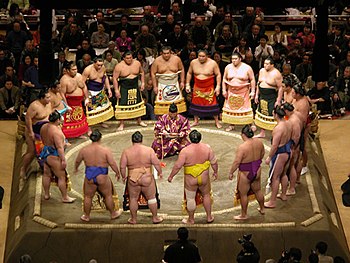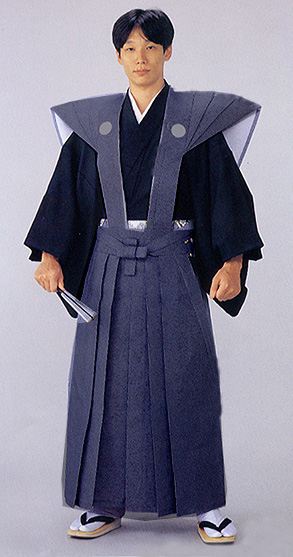1. Judo (literally means 'the gentle ways')
The three basic categories of techniques
practiced in Judo are throwing, grappling and striking, and the art of falling.
In sparring practices and contests, participants are only allowed to use a set
of approved techniques that excludes striking techniques to avoid injuries.
Strikes are only used when executing a sequence of pre-arranged movements
(kata).

2. Karate (literally means 'the way
of empty hand')
Two basic kinds of traditional karate performances are 'Kata'
(One fighter or a group performs their skills in front of judges. Precision,
technique, and posture are the criteria) and 'Kumite' (A sparing match between
two karate fighters. Kumite matches can end after a fixed time period, or after
the successful performance of an especially damaging techniques).

3. Kendo (literally means 'the way of
sword')
Kendo continued to be the symbol of
the samurai into the 19th century. The participants in
modern kendo are well protected and use bamboo swords. As in all the
Japanese martial arts, the
training of one's mind is essential.

4. Kyudo (literally means 'the way
of bow')
Kyudo is the
martial art of Japan archery. Bows has been used for many centuries in Japan
both as weapons of warfare and as hunting tools. It is relatively popular
recreational activity. It is practiced in Kyudojo, special facilities found in
schools and culture centers.
.
|

4. Aikido (literally means ‘the way
of the harmony spirit’)
Aikido
techniques allow one to overpower their opponent without much strength and
without injury to either party. It was created in Japan in first half of 20th century.


5. Sumo (Japanese wrestling)
Sumo is a
Japanese style wrestling and Japan’s national sport. Wrestlers who first exit
the ring or touch the ground with any part of his body besides the soles of his
feet will losses. There are no weight restrictions or classes
in sumo. As a result, weight gain is an essential part of sumo training.

6. Samurai
(Japanese warrior)
The samurai were the warriors of premodern
Japan. They later made up the ruling military class and became the highest
ranking social caste of the Edo
Period(1603-1867). Their main weapon
and symbol was the sword.
Relative peace prevailed during the roughly
250 years of the Edo
Period. As a result, the importance
of martial skills declined, and many samurai became bureaucrats, teachers or
artists. Japan's feudal era eventually came to an end in 1868, and the samurai class was abolished a few years
afterwards.







No comments:
Post a Comment